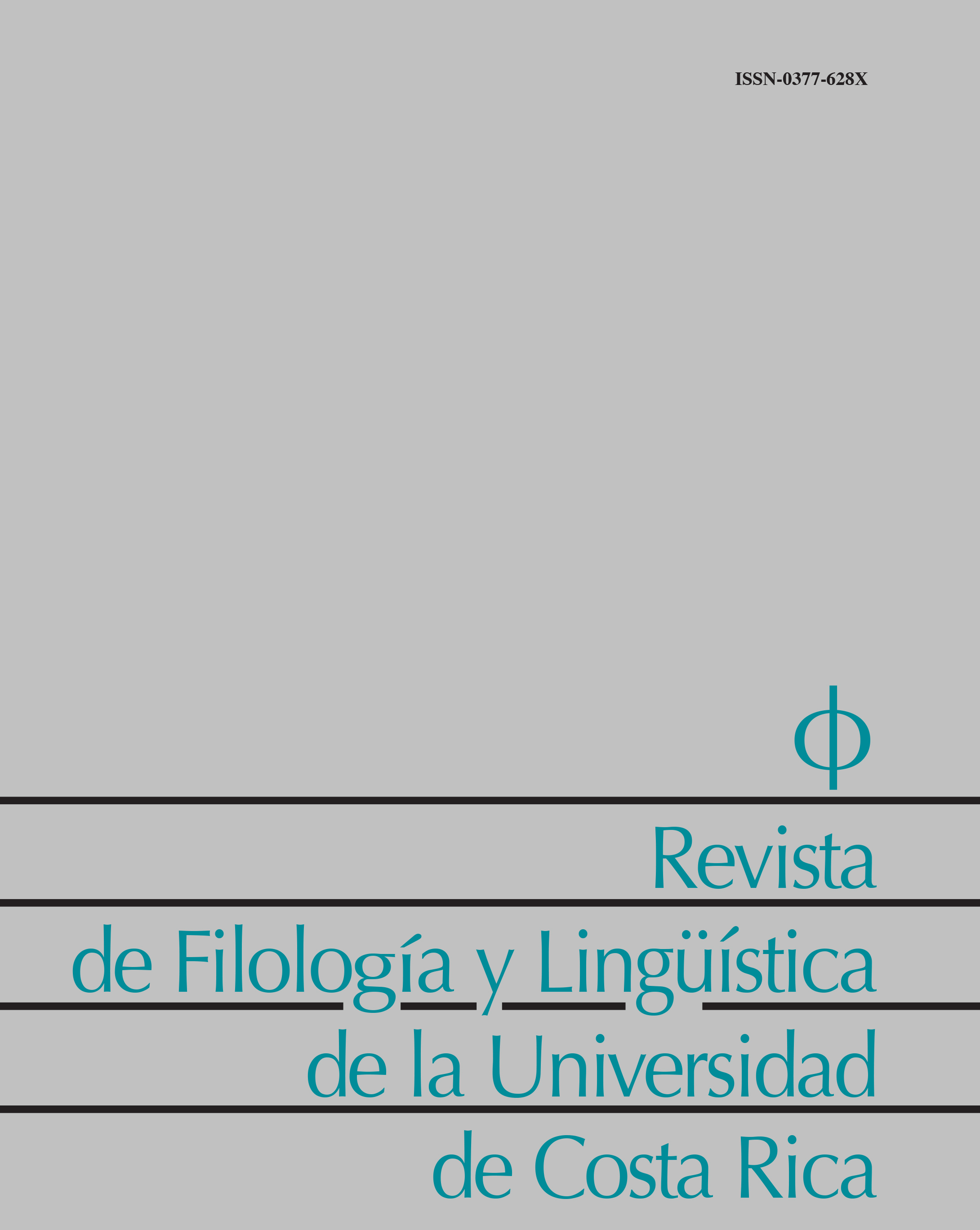Abstract
In this article we analyse the signs of variation and change of the nominal classification system in Bribri. In this language, nouns are assigned to nominal classes related to parameters such as the shape of the referent (flat, round, long) or its human character, among others. The class is realized by means of suffixes attached to the numeral roots, therefore it has been conceived as a system of numeral classifiers. However, the paradigms show formal differences up to certain numbers. For this reason, it has been suspected that, due to the shift process of the language, some classes have lost their own marking in some cases. In order to evaluate this hypothesis, we turned to the oldest descriptions and discursive corpus. In addition, we collected current date on the linguistic competence of several speakers. The examination of the historical documentation shows that the paradigms have not lost their marking since the end of the 19th century. On the other hand, the current data show that the tendency of change linked to the shift process consists of extending the marking of the flat class to others.
References
Bozzoli, M. E. (1977). Narraciones bribris. Vínculos, 3(1-2), 67-104.
Bozzoli, M. E. (1979). El nacimiento y la muerte entre los bribris. San José: Editorial de la Universidad de Costa Rica.
Constenla Umaña, A. (2004). El estudio de las lenguas de la Baja Centroamérica desde el siglo XVI hasta el presente. Estudios de Lingüística Chibcha, 23, 9-59.
Constenla Umaña, A. (2008). Estado actual de la subclasificación de las lenguas chibchenses y de la reconstrucción fonológica y gramatical del protochibchense. Estudios de Lingüística Chibcha, 27, 117-135.
Constenla Umaña, A., Elizondo Figueroa, F. y Pereira Mora, F. (1998). Curso básico de bribri. San José: Editorial de la Universidad de Costa Rica.
Constenla Umaña, A., Margery Peña, E. Morales Stuart, R. y Pereira Mora, F. (1978). Bribri I. San José: Departamento de Publicaciones de la Universidad de Costa Rica.
Constenla Umaña, A., Margery Peña, E., Morales Stuart, R. y Torres Marín, A. (1979). Bribri II. San José: Departamento de Publicaciones de la Universidad de Costa Rica.
Dorian, N. (2010). Investigating Variation. The effects of social organization and social setting. Oxford: Oxford University Press.
Gabb, G. (1905). Evangelio según San Juan. Londres: British & Foreign Bible Society.
Gabb, W. (1875). On the Indian Tribes and Languages of Costa Rica. Proceeding of the American Philosophical Society, 14, 483-602.
Gagini, C. (1917). Los aborígenes de Costa Rica. San José: Imprenta Trejos Hermanos.
Grinevald, C. (2007). The linguistic categorization of spatial entities: Classifiers and other nominal classification systems. En M. Aurnague, M. Hickmann y L. Vieu (Eds.), The categorization of spatial entities in language and cognition (pp. 93-121). Amsterdam: John Benjamins Publishing Company.
Grinevald, C. y Bert, M. (2011). Speakers and communities. En P. Austin y J. Sallabank (Eds.), The Cambridge Handbook of Endangered Languages (pp. 45-65). Cambridge: Cambridge University Press.
Hopper, P. y Traugott, E. (2003). Grammaticalization. Cambridge: Cambridge University Press.
Jara Murillo, C. (2018). Gramática de la lengua bribri. San José: E-Digital ED.
Jara Murillo, C. y García Segura, A. (2009). Se’ ẽ’ yawö bribri wa. Aprendemos la lengua bribri. San José: Editorama S.A.
Jara Murillo, C. y García Segura, A. (2013). Se’ ttö bribri ie. Hablemos en bribri. San José: E-Digital ED.
Jones, M. y Singh, I. (2005). Exploring Language Change. Londres: Routledge.
Krohn, H. (2014). Semántica de los cuantificadores numerales en el bribri de Coroma. Estudios de Lingüística Chibcha, 33, 209-239.
Krohn, H. (2015). Los clasificadores numerales en el cabécar de Bajo Chirripó. Estudios de Lingüística Chibcha, 34, 9-31.
Künne, M. y Mackenbach, W. (Eds.). (2019). Las lenguas chibchas de Centroamérica en la obra de Walter Lehmann. San José: SIEDIN
Lehmann, W. (1920). Zentral-Amerika: Die Sprachen Zentral-Amerikas in ihren Beziehungen zueinander sowie zu Süd-Amerika und Mexico. (Vol. 2). Berlin: Verlag Dietrich Reimer.
Margery Peña, E. (1982). Diccionario fraseológico bribri-español/español-bribri. San José: Editorial de la Universidad de Costa Rica.
Palosaari, N. y Campbell, L. (2011). Structural aspects of language endangerment. En P. Austin y J. Sallabank (Eds.), The Cambridge Handbook of Endangered Languages (pp. 100-119). Cambridge: Cambridge University Press.
Pittier, H. (1898). Die Sprache der Bribri-Indianer in Costa Rica. Sitzungsberichte der Kaiserlichen Akademie der Wissenschaften, Philosophisch-Historische Classe, 138(6), 1-149.
Pittier, H. (1904). Numeral Systems of the Costa Rican Indians. American Anthropologists, 6(4), 447-458.
Sánchez Avendaño, C. (2009). Situación sociolingüística de las lenguas minoritarias de Costa Rica y Censos Nacionales de Población 1927-2000: Vitalidad, desplazamiento y autoafiliación etnolingüística. Filología y Lingüística, 35(2), 233-272.
Sánchez Avendaño, C. (2019). Obsolescencia estructural y revitalización lingüística: El sistema de clasificadores numerales del bribri y el juego de los números Tté shtáwo̠k. En M. Haboud (Coord.), Lenguas en contacto: Desafíos en la diversidad 1 (pp. 373-394). Quito: Centro de Publicaciones de la Pontificia Universidad Católica del Ecuador.
Stone, D. (1993). Las tribus talamanqueñas de Costa Rica. San José: Comisión Costarricense V Centenario del Descubrimiento de América.
Thiel, B. A. (1882). Apuntes lexicográficos de las lenguas y dialectos de los indios de Costa Rica. San José: Imprenta Nacional.
Tristán, J. (1913). Apuntes sobre la Lengua Bri-brí. (Texto manuscrito).

